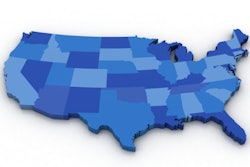
People living in rural areas who are eligible for annual CT lung cancer screening have less access to it, according to a report published February 15 in the journal Cancer by a team of researchers from the American Cancer Society (ACS).
The findings underscore the importance of addressing geographic disparities in preventive care, wrote a team led by Liora Sahar, PhD, of the ACS in Atlanta.
"Approximately five percent of the eligible population does not have access to screening facilities within 40 miles," the group noted. "Across all distances and geographies, there is a larger percentage of the population in rural geographies with no access."
Uptake rates for lung cancer screening remain low, although that may change since both the U.S. Preventive Services Task Force (USPSTF) and the U.S. Centers for Medicare and Medicaid Services (CMS) recently expanded the pool of people eligible for screening, lowering the start age and smoking history years.
But barriers to CT lung cancer screening exist and can include lack of access due to where people live. Sahar and colleagues investigated differences in lung cancer screening accessibility across rural and urban settings among people between the ages of 50 and 80, using the 2021 USPSTF framework.
The team used data from the American College of Radiology (ACR) Lung Cancer Screening Registry to calculate distances from population centers to screening facilities (10, 20, 40, 50, and 100 miles); it used census data to classify population centers as rural or urban.
Sahar's group found that, overall, 5% of individuals eligible for lung cancer screening did not have access to an appropriate facility within 40 miles and that a larger percentage of rural inhabitants (8% of the study cohort) had no access compared with their urban counterparts.
The findings suggest clear directions for further research, Sahar and colleagues noted.
"Disparities in access should be examined as both percentages of the population and numbers of individuals with no access in order to tailor interventions to communities and increase access," they concluded.



















